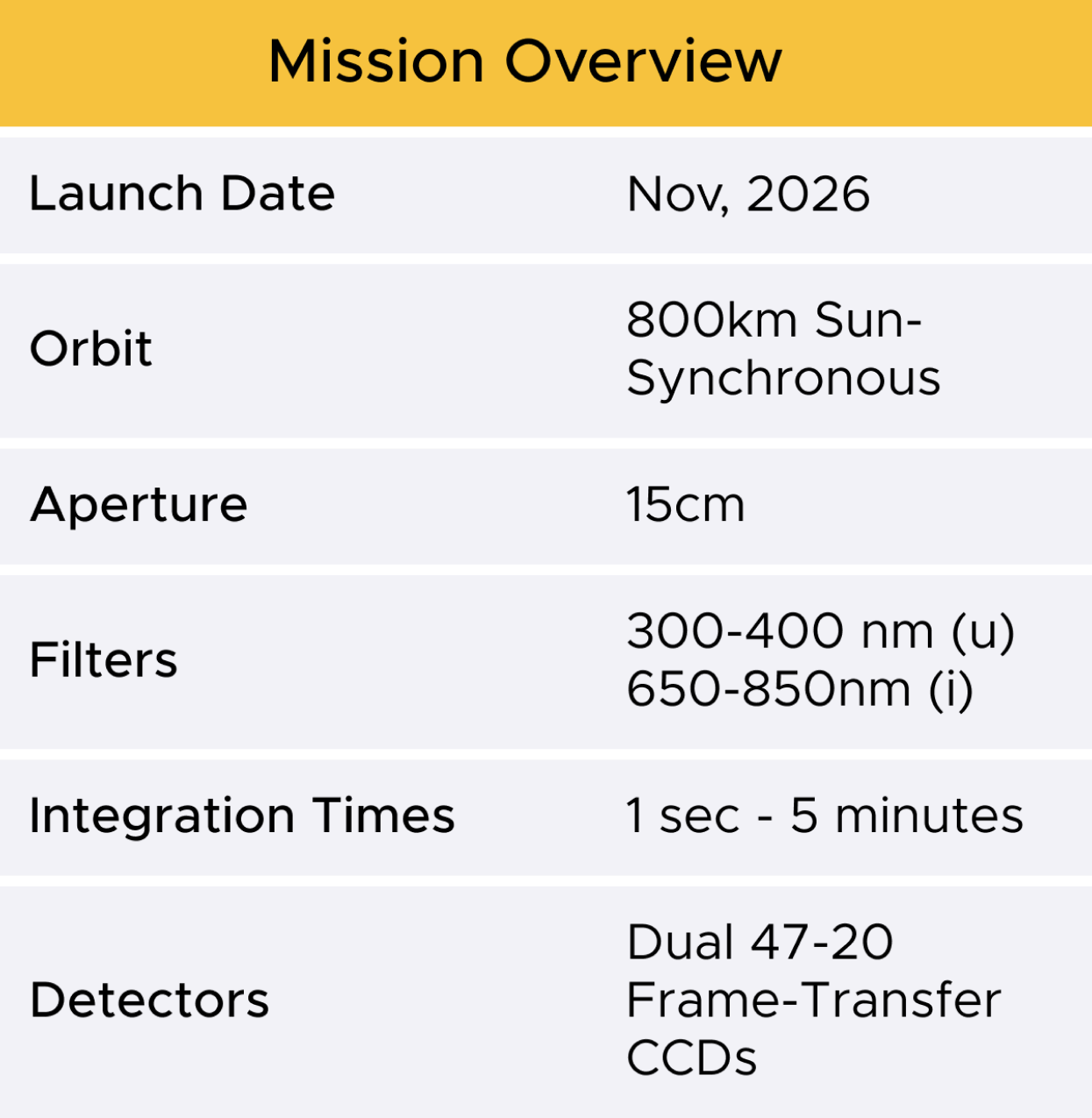As we enter the Era of Extrasolar Astrobiology, a Canadian mission to discover habitable zone planets and characterize atmospheres is well timed. Space is a Canadian priority and a micro-satellite with a prime mission to study extrasolar planets aligns well with priorities identified by the Canadian Astronomy community through its Long Range Plan and from the Canadian Space Exploration Workshop (CSEW 2016).
Canada is an established leader in micro-satellite technology. Our mission builds on this proud history to push innovation in our exploration of distant worlds.
The two year mission, with a proposed launch date of November, 2026 will:
• Equip youth to excel in the jobs of the future by providing hands on experience with a Canadian-led mission.
• Help build and retain a work force capable of contributing to next-generation Canadian flagship missions.
• Provide 25% open time for Canadians and maintain an Open Data access policy.
The mission is a University PI lead co-funded mission.
POET is a 20-cm space telescope on board a micro-satellite placed in an 800-km sun-synchronous orbit. The telescope will feed dual CCD (Charged-Coupled Device) detectors to create a highly efficient photometer. One detector will be coated to observe in the Sloan Digital Sky Survey (SDSS) u-band centred at 356 nm with an effective width of 46.3 nm.
The second detector will be designed to observe in the SDSS (Sloan Digital Sky Survey) i-band with a central wavelength of 767 nm with an effective width of 106.4 nm. The detectors will be used alternately for both science and guidance imaging depending on if priority is for u-band or i-band photometry. The spacecraft payload will have a continuous viewing zone (CVZ) from approximately -20 to +30 in declination and capable of staring at a single field of up to 2 months. A minimum mission life of 2 years is required to reach our intended science goals.

The Science Objects of the Photometric Observations of Exoplanet Transits (POET) mission is the characterization and discovery of extrasolar planets. Extrasolar planets will be characterized by measuring the change in exoplanet radius as a function of wavelength. This technique is commonly known as transit spectroscopy.
Our goal to measure u-band photometric transits to characterize Rayleigh scattering on 30 known extrasolar planets. The use of u-band i-band transit photometry will allow for improvement of exoplanet fundamental parameters and establish legacy long-term precision timing of transit events. The discovery of exoplanets will use high-cadence, precision i-band photometry to detect small, potentially rocky and habitable exoplanets via the transit method around very low mass stars and brown stars.
The mission has important ancillary science goals related to stellar astrophysics that take advantage of the unique observational capabilities of the proposed mission.